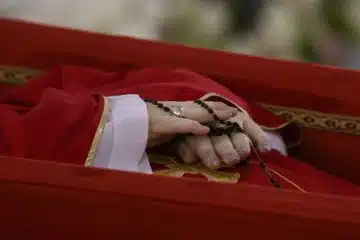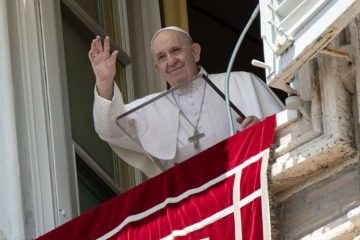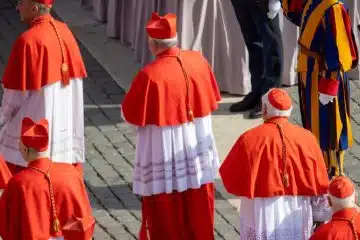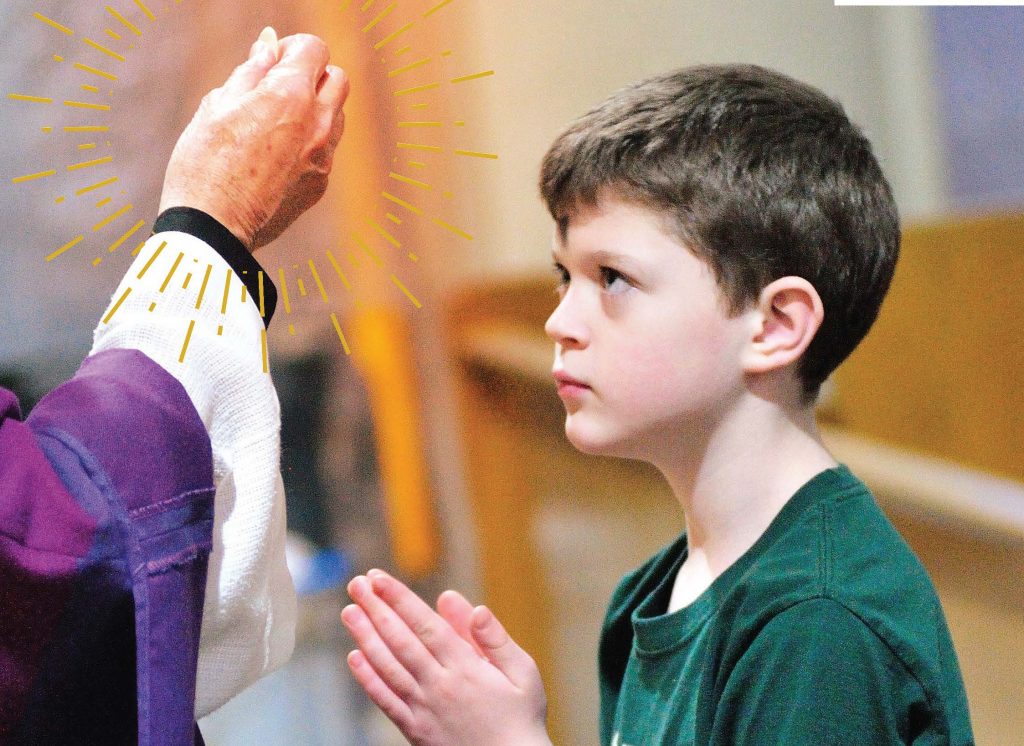Real Presence is the Real Present
“God so loved the world that he gave his only Son that all who believe in him may not perish but have eternal life.” (Jn: 3:16)
God calls us not to simply follow the rules, but to be in a relationship of love and life with Him. Any loving relationship needs nourishment, and our relationship with God is nourished par excellence in the celebration of the Mass. The Mass is an encounter with the Lord in which there is a give and take, a dynamic encounter of love with the Lord. Gathered by the Holy Spirit, listening to God speak to us through His word, led by the priest, we are drawn into the very life and saving action of God that comes to its climax in the reception of His Son’s Body and Blood in the forms of bread and wine. We call the reality of Christ presented this way as “the real presence.”
What do we mean by this expression? In theological terms, it means Jesus Christ is present to us in every aspect of His being. He is present as the Second Person of the Trinity who always was, is and will be. He is present as God in His human form as God conceived Him in Mary’s womb. He is present in His passion, in His death and in His risen state, ascended into glory. There is nothing lacking in His presence to us.
In traditional theological terms, we refer to Christ being present in body, blood, soul and divinity. As Catholics, we believe that, through the power of the Holy Spirit, the actions of Christ (via the priest in whom He is present) and the words of consecration, the bread and wine become, in the core of their beings, the body and blood of our Lord. In today’s vernacular, we would say they change “in their essence;” in older theological terms, in their “substance.” They become – in the deepest reality – Christ Himself, fully present in His Body and Blood. This can occur only through the work of God. Just as creation came about through God’s word, so does this gift to us.
When we speak of the Body of Christ, we mean neither a chunk of dead flesh that could be put under a microscope and identified as human cells, nor blood we could type as A, B or O. This is not because it isn’t really His body or blood, but rather because we are receiving the crucified and risen Lord, a state in which the soul cannot exist separate from body.
Though we are commanded to eat His body and drink His blood, each contains Jesus’ full Presence. Each reveals the meaning of His coming to us – as heavenly food to nourish us on the journey and in blood that seals the eternal covenant. This is why receiving the sacrament in both forms is good. It draws us by sacramental action into the fullness of Christ’s saving act. The appearances of bread and wine remain, but their reality is Christ Himself.
Understanding this great gift of Christ’s body and blood is only part of the purpose of His Real Presence. The reason He gave Himself to us in the Eucharist is so we can receive Him into our very bodies, and thus be taken into Him. There is no way to do this remotely. Just as the food we eat is absorbed into our bodies and becomes part of us, so we are meant to unite with Christ in a bond of love so great that we become part of His mystical body, the Church. This requires that we surrender our wills to Christ so that His body remains healthy; we live in Him on Earth so we may live with Him in eternity.
In one of the accounts of the martyrs, a young Christian woman was questioned why she would defy the emperor’s law by receiving the Eucharist. Her response: “Sine Dominico non possumus” – “Without the Eucharist, we cannot live.” May we never forget these words, for they contain the secret of eternal life. It is not simply by prayer, singing and preaching that we are alive in Christ, but by He, Himself, as our food and drink.
The bishops of Ohio have, until further notice, dispensed Catholics from the obligation to attend Mass on Sundays and holy days. When you attend Mass in person, please wear a mask, abide by the social distancing protocols of that parish and use hand sanitizer.
This article appeared in the February 2021 issue of The Catholic Telegraph Magazine. For your complimentary subscription, click here.














